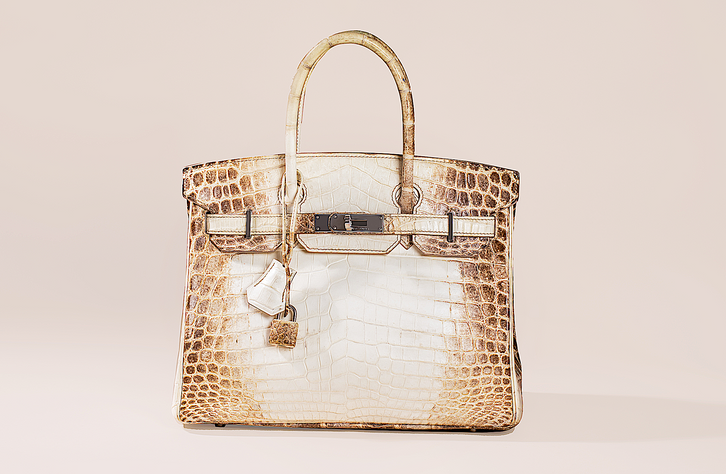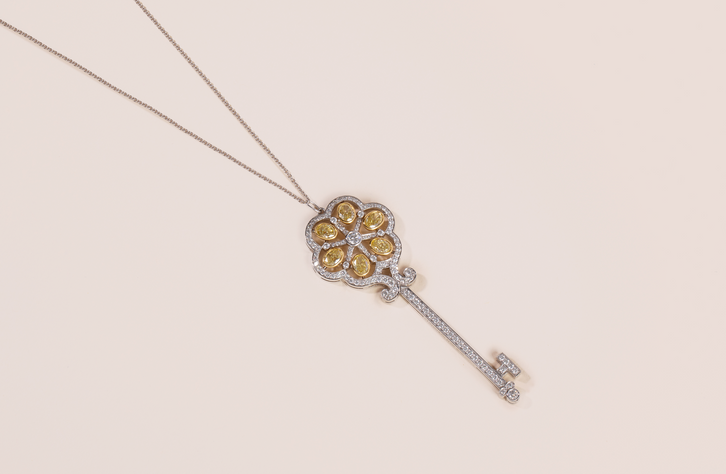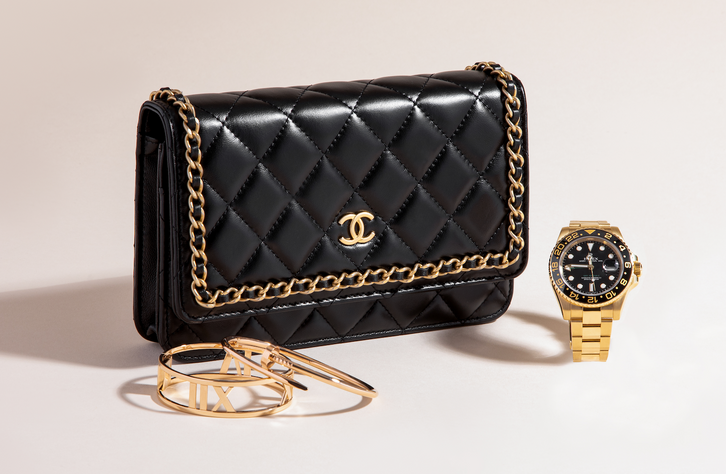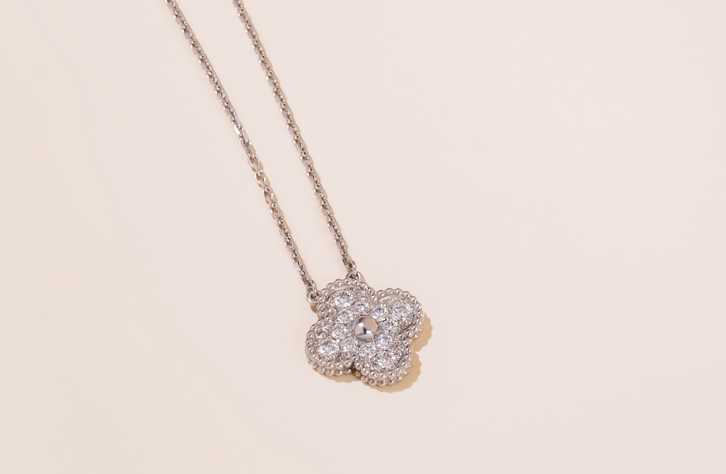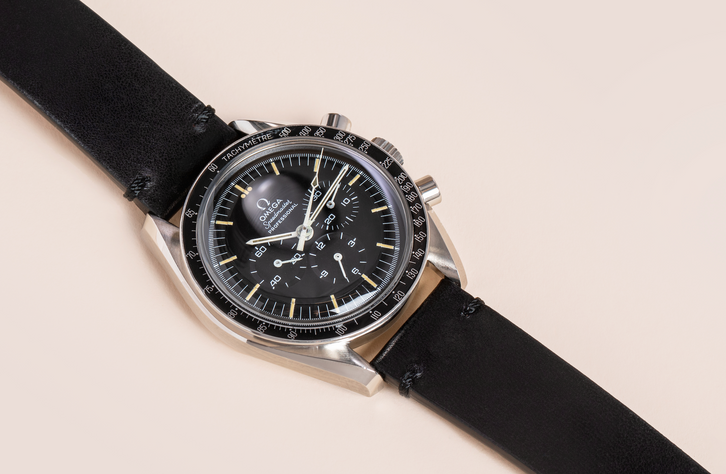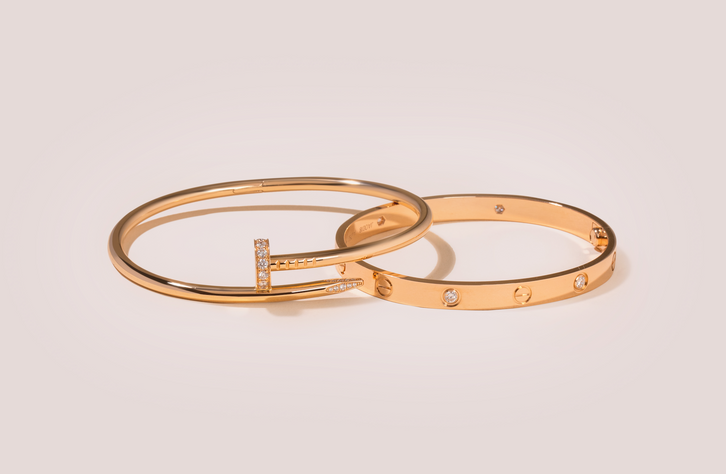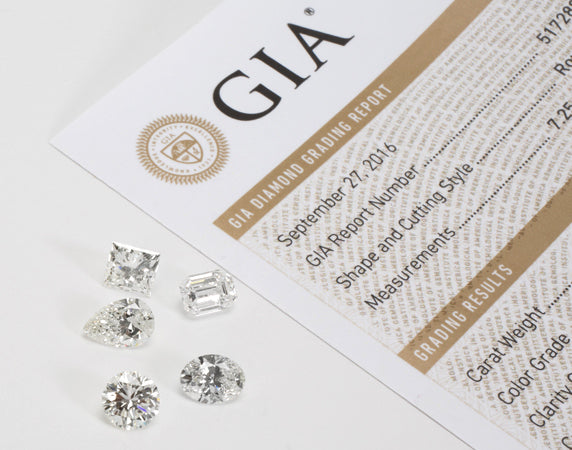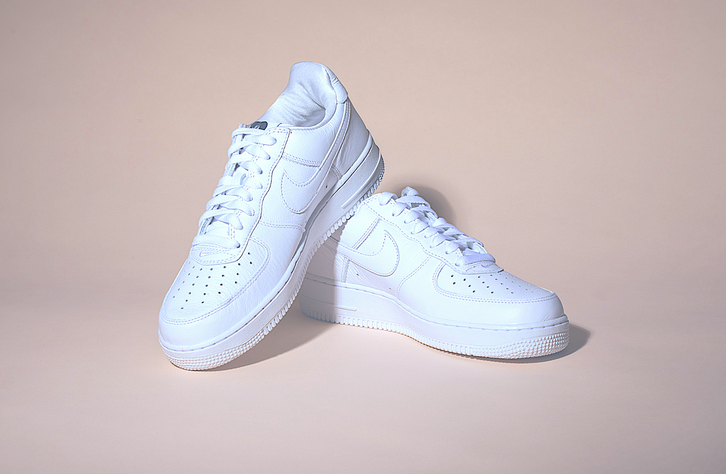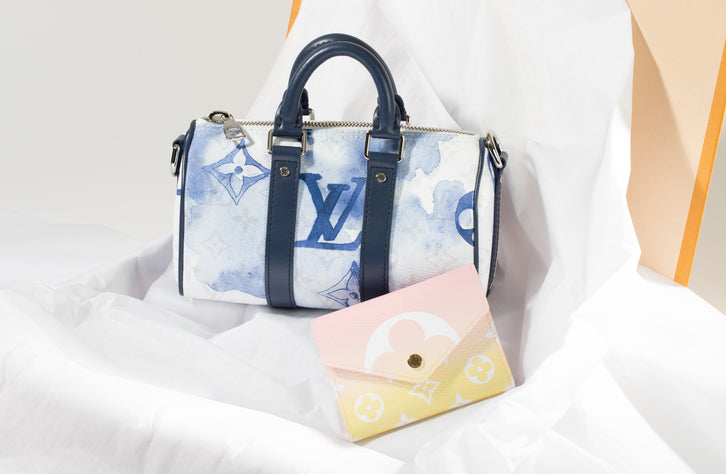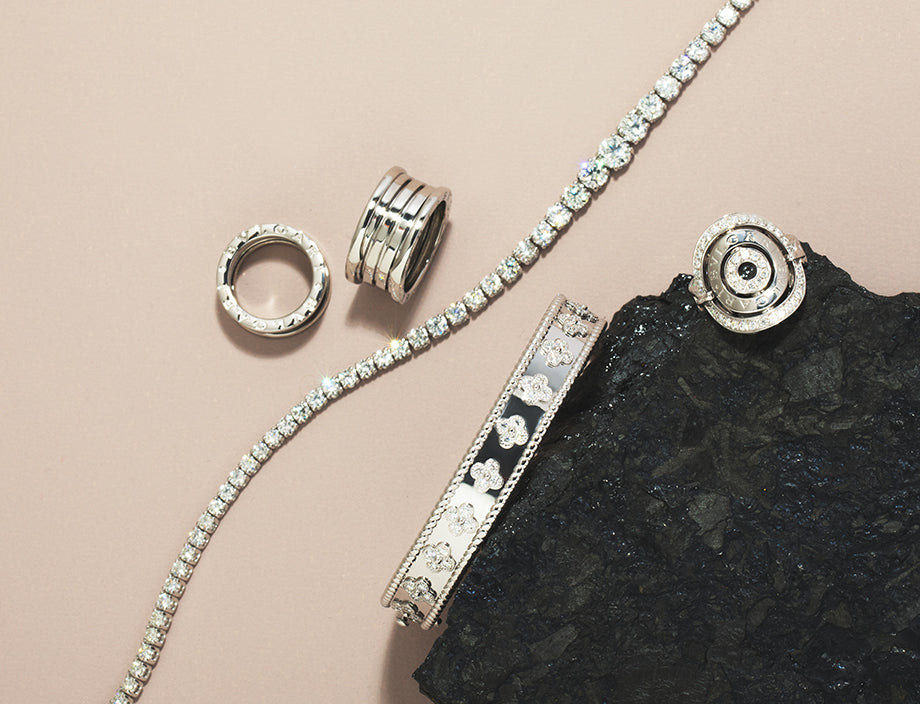Get the answers to the following questions:
- What is moissanite?
- How was moissanite discovered?
- What are the benefits of moissanite?
- What are the drawbacks of moissanite?
- What is moissanite worth?
- Diamond vs moissanite
- How to buy and sell real diamond jewellery
What Is Moissanite?
Moissanite is a popular diamond alternative, like cubic zirconia, which possesses diamond-like properties. For most people, moissanite is indistinguishable from diamonds. However, an experienced gemmologist can easily tell moissanite from genuine diamond. Even when cut the same, moissanite will appear to have more facets than diamonds because of its unique chemical composition.
Compared to diamonds, moissanite produces a much stronger fire, which looks like colored flashes of light. Due to their exceptionally strong fire, moissanites are sometimes referred to as disco balls. Moissanite is also available in four colour groups:
- Colourless: Comparable to a D, E or F diamond colour grade.
- Near Colourless: Comparable to a G, H or I diamond colour grade.
- Slightly Tinted: May be slightly tinted with yellow or green hues, comparable to a J or K diamond colour grade.
- Fancy Coloured: Such as fancy blue, yellow or green.
Interestingly, moissanite is measured by their size in millimetres rather than carat weight like diamonds. This is done because moissanite weighs less than diamonds. Therefore, a 1 carat diamond is comparable to a 6.5 moissanite.
How Was Moissanite Discovered?
Moissanite was first discovered by Henri Moissan in 1893. As Moissan was examining samples from a meteor crater in Arizona, he thought that he had found diamonds. However, in 1904, Moissan realized that he had actually discovered a naturally occurring silicon carbide, later known as moissanite. Just two years before Moissans discovery, synthetic silicon carbon was made by Edward G. Acheson.
Naturally occurring moissanite is incredibly rare, mainly found in meteorites and as inclusions in diamonds. Since natural moissanite is so scarce, its existence was even questioned by geologists in the 1980s. Due to its rarity, all moissanite used in jewellery and industrial tools is synthetic. Moissanite did not appear in jewellery until 1993, when jewellers Charles & Colvard obtained the patent to create it.
What Are The Benefits Of Moissanite?
Moissanite has numerous commercial and industrial uses because of its hardness of 9.25 on the Mohs Scale as well as its ability to retain heat, with a melting point of 2,730 °C. Due to its striking resemblance to diamonds, low price and ability to be cut into any shape, moissanite is a popular choice for gemstone jewellery. Moissanite also possesses a higher refractive index (how fast light can pass through a material) than diamonds, which means that they can better sparkle in dull lighting.
What Are The Drawbacks Of Moissanite?
Moissanite comes with a number of drawbacks which diminishes its value. The main issue with synthetic moissanite found in jewellery is that it is neither rare nor valuable. Unlike diamonds which are treasured due to their scarcity and value.
Additionally, some people are also turned off by moissanites strong disco ball effect which intensifies in sunlight and under fluorescent lighting.
What Is Moissanite Worth?
If you own a moissanite, you likely have wondered what moissanite is worth. The truth is that moissanite possesses very little value, especially in comparison to diamonds. For instance, a one carat diamond with good clarity, colour and cut grades will cost over a thousand pounds, while a similar moissanite will only set you back a few hundred pounds. If you are looking to sell moissanite, you have very limited selling options. Your best options are to sell to pawn shops or private buyers. Unfortunately, you will not be able to recoup what you originally spent on your moissanite.
Diamond Vs Moissanite
Here is a quick rundown of the differences between diamonds and moissanite:
Diamonds:
- Colour Grade: Exist in a wide and exciting range of colour grades from D (colourless) to Z (faint yellow) as well as fancy colours such as blue, green, red or pink.
- Clarity Grade: Can come in an array of clarity grades from Flawless to I3 (visibly flawed).
- Hardness: 10, the hardest naturally occurring mineral on the Mohs Scale.
- Refractive Index: 2.42
- Value: Diamonds better hold second their value; you can expect to receive 25% to 50% of its original purchase price.
- Price: A good one carat diamond can cost over a thousand pounds.
Moissanite:
- Colour Grade: Ranges from colourless to near colourless as well as fancy colours such as yellow and blue.
- Clarity Grade: Flawless to nearly flawless.
- Hardness: 9.25
- Refractive Index: 2.65
- Value: Negligible second-hand value.
- Price: A good one carat moissanite can cost a few hundred pounds.
How To Buy And Sell Real Diamond Jewellery
SELL DIAMONDS OR DIAMOND JEWELLERY: myGemma is a leading diamond, designer jewellery and luxury watch buyer, with a secure and trusted selling process. Established in 2102, our team of industry experts and client managers work with hundreds of clients across the world on a daily basis. We pride ourselves not just on our strong prices and speed of service, but also on providing a high-end selling experience with unparalleled customer service. Sell online or in person in as little as 48 hours with our fast, free and easy selling process. But dont just take our word for it, our commitment to excellence is illustrated by our hundreds of exceptional customer reviews.
To get started:
- To receive a price quote, simply complete our online form.
- Your client manager will contact you with a price quote and explain your selling options. You can either schedule an appointment at one of our offices in Birmingham, London, New York or Hong Kong OR request a free, fully insured and trackable Special Royal Mail Delivery Pack.
- Once we have examined your jewellery in person, we will contact you with our final offer.
- You can accept full payment by bank transfer or request to have your items returned free of charge. Its that simple.
BUY OR UPGRADE DIAMOND OR DIAMOND JEWELLERY: If you are feeling inspired to update your jewellery box with diamond creations, myGemma is here to help. In as little as 48 hours, you can get paid in cash OR opt to receive 10% more on your offer in the form of store credit to spend at one of our jewellery store partners, making your next diamond purchase even more affordable (store prices exclude VAT).
Click the button below to begin selling to the experts today.









